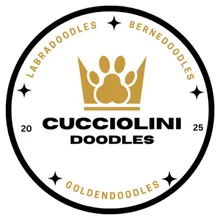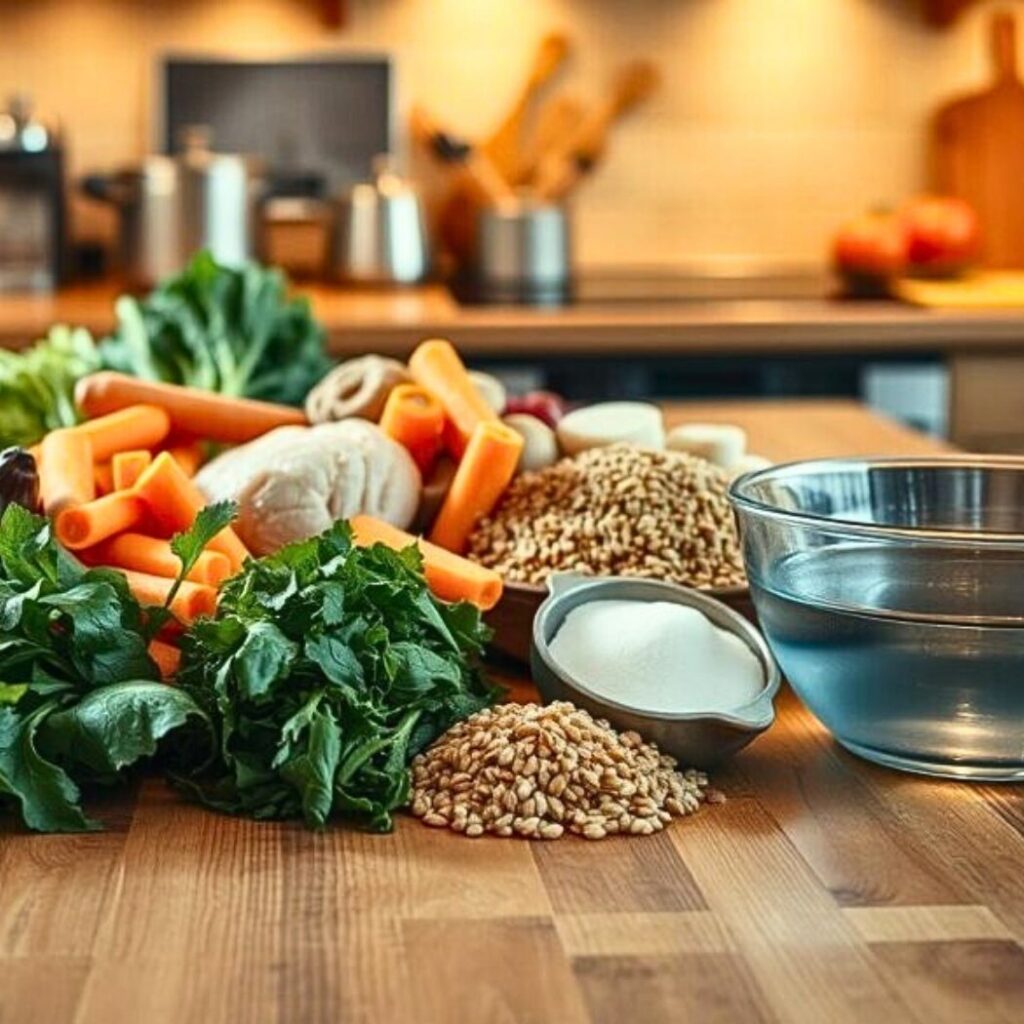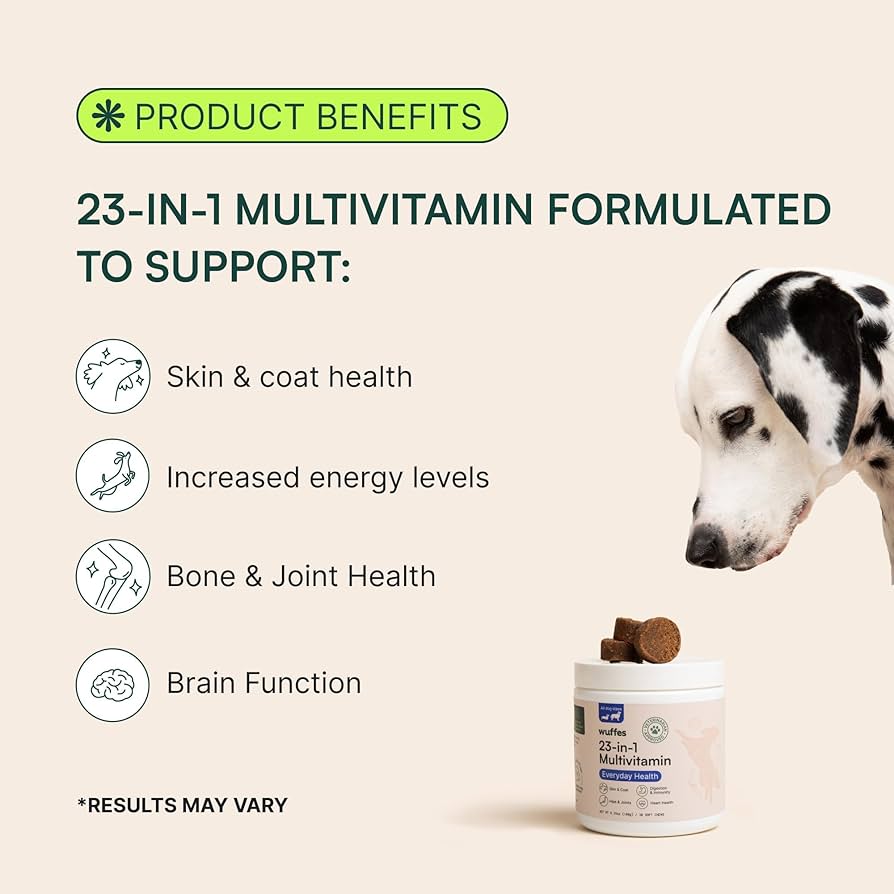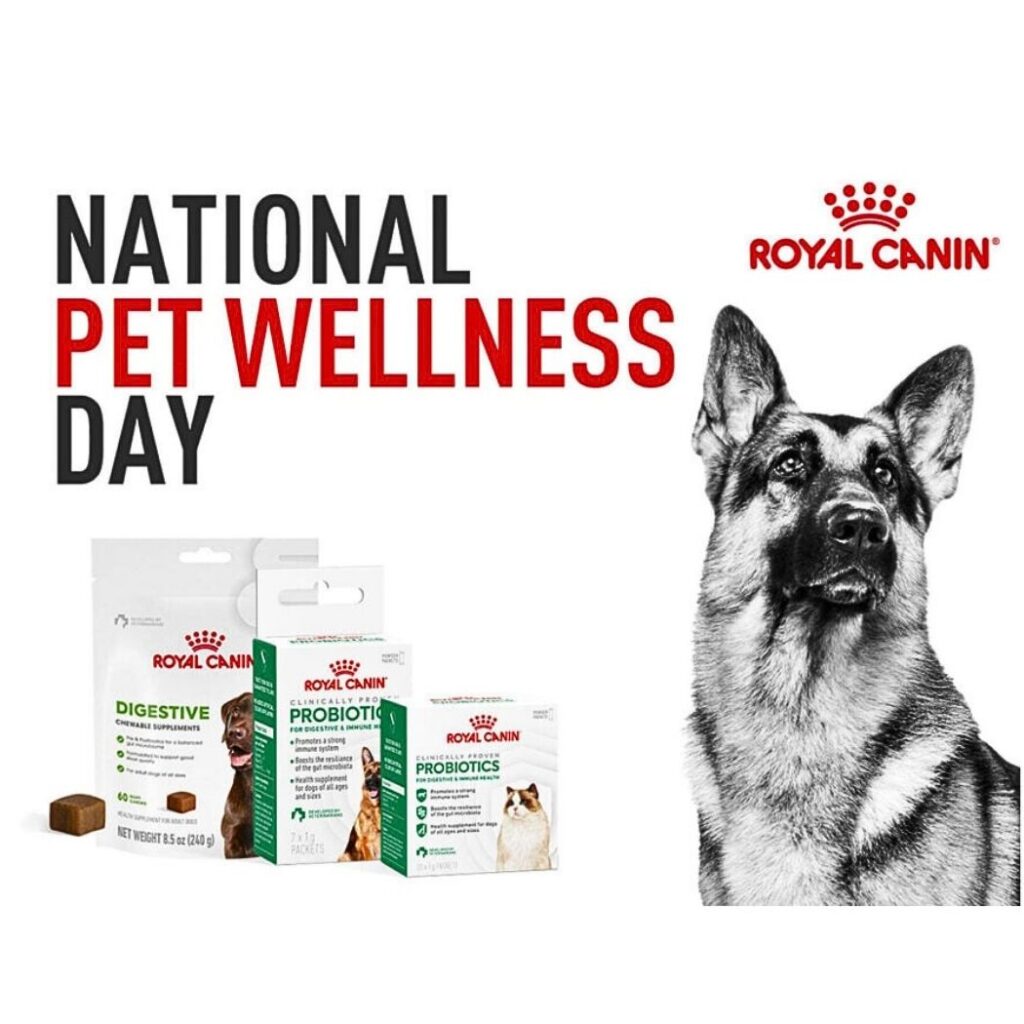Homemade Dog Food: A Healthy Choice for Your Dog?
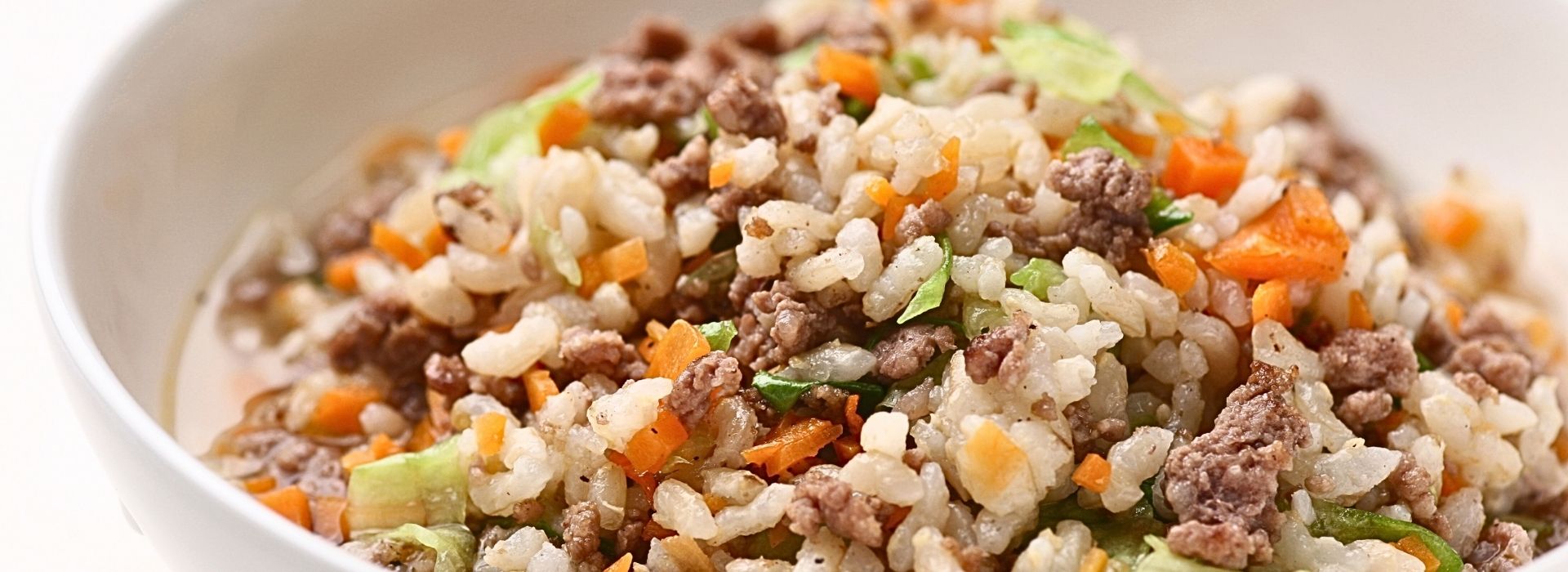
Homemade Dog Food About 60% of dog owners have tried making food for their pets. When people talk about dog nutrition, they often ask: is homemade dog food healthy? This topic has made pet lovers consider cooking over buying dog food. However, experts like Dr. Jennifer A. Larsen and Dr. Joe Bartges say we need to be careful. They note that it’s not clear if homemade meals are better than store-bought ones. Still, many are drawn to making pet food at home because of worries about ingredients and wanting a more ‘natural’ diet for their pets.
Some people argue that homemade dog food is healthier, while others prefer the ease and guaranteed nutrition of commercial foods. Despite these views, most agree that whole, less-processed foods could be better for pets in the long run. Whether dealing with food sensitivities, reacting to food recalls, or just enjoying cooking for pets, there are many reasons to try it. But, it’s also important to remember that there are commercial foods available that use whole ingredients and can fully meet a dog’s dietary needs.
The Rise of Homemade Dog Food: Trends and Reasons
Key Takeaways
- Homemade dog food is a topic of growing interest among dog owners, with 60% trying their hand at canine culinary arts.
- The health benefits of homemade meals for dogs are a topic of debate among veterinarians.
- Veterinary professionals caution against unfounded claims and emphasize the importance of scientific evidence when evaluating dog nutrition.
- Whole, less-processed ingredients may offer long-term health advantages for dogs, but balanced nutrition is crucial.
- Commercial dog foods with quality ingredients present a viable alternative to homemade meals, meeting canine dietary needs effectively.
The Rise of Homemade Dog Food: Trends and Reasons
Recently, more people have started making homemade dog food. They want to know what their pets eat. This trend helps fight food allergies and avoids pet food recalls. Making homemade dog food is about health, fun, and bonding. We’ll look at why people prefer homemade dog food recipes over store ones.
Why Pet Owners Choose Homemade Meals
Many choose homemade dog food to offer healthy dog food recipes. These meals don’t have the bad stuff found in some commercial foods. For pets with special diets or health issues, natural dog food recipes are perfect. They can really help your pet feel better.
Comparing Homemade Dog Food to Store-Bought Diets
| Aspect | Homemade Dog Food | Store-Bought Food |
|---|---|---|
| Ingredients | Whole, natural ingredients | Often includes preservatives and fillers |
| Customization | Recipes can be tailored to specific health needs | Generic, less flexibility |
| Nutritional Value | Potential for higher nutritional content | May lack variety and freshness |
| Emotional Benefit | Increases bonding and trust | Less personal involvement |
Making homemade dog food takes more time than buying it. But the advantages, like better nutrition and bonding, are worth it. It makes pet owners feel good to know their pets are eating healthy.
Homemade Dog Food: Is It Healthy to Cook for Your Dog?
When thinking about if homemade dog food is good for dogs, it’s key to see its pros and cons. Making food at home can let us create nutritious meals that meet our dogs’ health needs. Yet, it needs careful thought and know-how.
People who support cooking for your dog say it’s great because you can choose fresh, whole ingredients. These ingredients don’t have the preservatives found in some store-bought dog food. But, experts like Dr. Larsen and Dr. Bartges warn about the dangers of not getting the diet just right. A homemade diet could have too much or too little of what dogs need, which can cause health problems later.
To make sure homemade dog food is safe and good, talking to a vet who knows about dog nutrition is a smart move. They can help design meals that are just right for your dog’s age, size, and health. Things they might suggest include:
- Right amounts of protein, carbs, and fats
- Enough vitamins and minerals
- Changes based on your dog’s health
In the end, cooking for your dog is more about making sure the meals are fully nutritious. It should fit what your dog specifically needs.
Understanding Dog Nutrition Basics
For anyone thinking about making their dog’s food at home, learning the basics of dog nutrition is key. Dogs need a diet with around 40 vital nutrients for their health. When you choose the right nutrients for a homemade diet, you help your dog stay healthy and avoid dietary problems.
It’s important to make sure your dog’s diet fits their needs. Each dog needs different amounts of proteins, fats, carbs, vitamins, and minerals based on their age, breed, and health. Figuring out what is a healthy dog food for my dog starts with knowing these needs.
Comprehending dog nutrition isn’t just about feeding; it’s about nurturing. It’s about making every meal a stepping stone towards prolonged health and vitality.
The essentials for a healthy dog diet include:
- Protein: Lean meats like chicken, beef, and fish
- Fats: Essential fatty acids from fish oil, flaxseed, or coconut oil
- Carbohydrates: Easily digestible options such as sweet potatoes and brown rice
- Vitamins and Minerals: Varied vegetables and specific supplements as needed
These ingredients help dogs by building tissues, supporting metabolism, and more.
| Nutrient | Function | Examples |
|---|---|---|
| Protein | Build and repair tissues | Chicken, Yogurt |
| Fats | Energy source, absorbs vitamins | Fish oil, Olive oil |
| Carbs | Provide energy | Barley, Oats |
| Vitamins | Boost the immune system | Carrots, Spinach |
By mixing these nutrients properly, you meet your dog’s health needs. This approach supports their immune system, energy levels, and gives them a healthy coat. It’s more than meals; it’s about creating a healthy lifestyle for your dog.
Benefits of Homemade Dog Food for Canine Health
Making your dog’s food at home has many benefits, especially for their health. It lets you pick each ingredient to help with allergies, obesity, or other issues. This way, you can ensure they eat healthy and fit their dietary needs.
Using healthy ingredients for dogs in their meals is powerful. It boosts their health and happiness. Dog meal prep also brings you closer to your pet, as you spend time making their food with care.
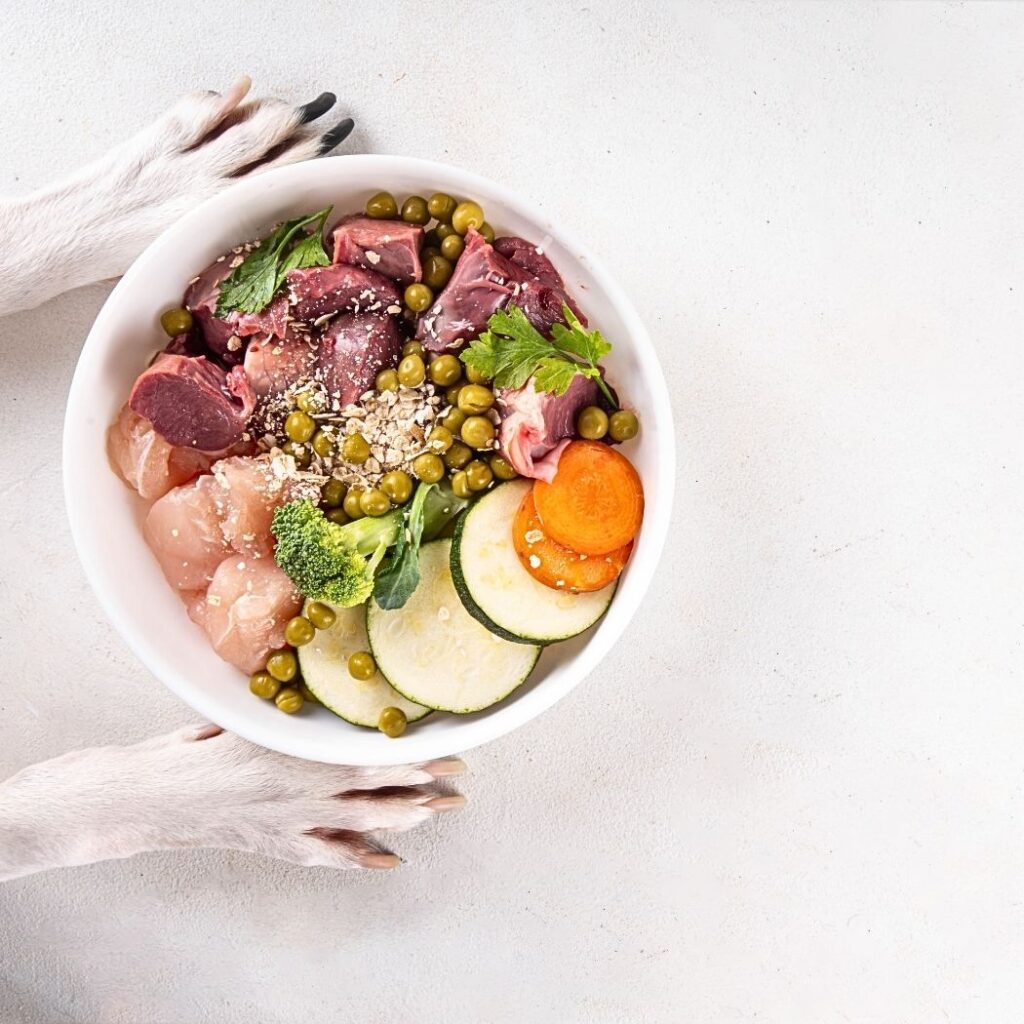
Customizing your dog’s food to meet their health needs is a major plus. You can easily adjust calories, up the protein, or add supplements. It’s simple to tailor their diet exactly how they need it.
- The Joy and Bonding of Cooking for Your Dog
Dog meal prep is more than just feeding your pet; it’s a way to bond. Preparing meals is an act of love. It makes your dog feel loved, secure, and happy.
Common Pitfalls and How to Avoid Them
When making homemade dog food, knowing and avoiding typical mistakes is critical. Here are essential tips for keeping nutritious dog meals safe. Think about these when choosing between homemade and store-bought dog food.
Ensuring Nutritional Balance in Homemade Dog Food
Ensuring your homemade meals are full of nutrients is crucial. Use sites like BalanceIT.com for help. This service helps pet owners craft meals that meet their dogs’ dietary needs. This reduces the chance of missing important nutrients.
- Maintain a balanced diet that includes a proper ratio of protein, fats, and carbohydrates.
- Integrate variety to cover a broad spectrum of essential vitamins and minerals.
- Seek advice from a veterinary nutritionist whenever possible.
Avoiding Toxic Foods and Unsafe Ingredients
It’s key to know which items to skip to keep your dog healthy. Here’s a list of items to avoid:
- Chocolate and caffeine, which can be toxic.
- Xylitol used in sugar-free products can cause liver failure.
- Onions and garlic, even in small amounts, can be harmful.
- Grapes and raisins can cause kidney failure.
- Avocado contains persin which is toxic to dogs.
- Macadamia nuts can cause lethargy, vomiting, hyperthermia, and tremors in dogs.
Staying away from these ensures you provide nutritious dog meals. This will help your pet stay healthy and happy.
How to Choose Healthy Ingredients for Your Dog
Picking the right ingredients for healthy homemade dog food is key. As a pet owner, you know how important your dog’s nutrition and safety are. This starts with choosing top-notch, whole-food ingredients that are both good for them and tasty.
It’s important to look at the quality of proteins and consider organic versus non-organic ingredients. Good proteins are essential for a nutritious pet diet. Including lean meats like chicken, turkey, and beef, as well as some fish, gives your dog the vital amino acids and fatty acids they need to stay healthy.
Focusing on Whole Foods and Quality Proteins
Whole foods have natural enzymes and nutrients, which are great for your dog. By using whole vegetables, grains, and proteins, we make meals that mirror the rich variety found in their ancestral diets. This meets their nutritional needs and makes the food taste better.
Organic vs. Non-Organic Ingredients: What’s Better?
Choosing between organic and non-organic ingredients involves thinking about pesticides and additives. Organic dog food uses components free from synthetic pesticides and fertilizers. Many pet owners believe this is a healthier option.
But, it’s important to consider the cost—organic ingredients can be pricier. However, they may be better for your dog in the long run. Knowing what your dog needs and what sensitivities they might have helps you decide whether to use organic or non-organic items in their diet.
In the end, whether you go for organic or non-organic, quality and freshness are what matter most. Always aim for the freshest ingredients since fresh food has more nutrients. It’s also more likely to be free of preservatives and artificial stuff, which is perfect for making the healthiest homemade dog food.
Recipes and Meal Prep: Getting Started with Homemade Dog Food
Starting to make diy dog food at home can be exciting and challenging. It’s important to find easy-to-make and healthy dog food recipes that meet your pet’s needs. When you prepare with care, making homemade dog treats and meals is very rewarding. We’ve got basic guidelines and recipes to help you make nutritious meals at home.
Simple and Nutritious Dog Food Recipes
Choosing the right dog food recipes is key to a healthy diet for your pet. The ingredients and their amounts need to be just right for complete nutrition. Here are two great recipes that give you an idea of what is a healthy homemade dog food recipe?
- Chicken and Rice Dog Food
Ingredients: Cooked chicken, brown rice, carrots, zucchini, and peas.
This dish offers a good balance of protein, carbs, and vitamins. Make sure to cook the veggies to make them easier for your dog to digest. - Beef and Pumpkin Dog Stew
Ingredients: Cooked beef, pumpkin, spinach, and turmeric.
This stew is packed with protein and fiber, promoting good digestion and energy.
These recipes can be adjusted based on your dog’s health needs. They’re great for starting a wholesome homemade diet.
Tips for Efficient Dog Meal Prep
Being efficient with meal prep is vital for a homemade dog food diet. Here are tips to make it smoother:
- Batch Cooking: Make large amounts of proteins and veggies once a week to save time.
- Proper Storage: Keep meals fresh in airtight containers in the fridge or freezer to avoid spoilage.
- Regularly Rotate Ingredients: Change up the ingredients to ensure your dog gets all the nutrients it needs and prevent deficiencies.
| Ingredient | Benefits | Cautionary Notes |
|---|---|---|
| Chicken | High in protein, low in fat | Must be cooked and without bones |
| Pumpkin | Good for the stomach, high in fiber | Only use plain pumpkin, not pie filling |
| Carrots | Ric in beta-carotene and vitamins | Cut small to prevent choking |
Remember, every pet is different, so what is a healthy homemade dog food recipe for one may not work for another. Always talk to a vet before changing your dog’s diet significantly.
Supplements: Are They Necessary?
When making homemade dog food good for dogs, a big question pops up. Are dog food supplements needed? Many pet nutrition experts say yes, especially with healthy homemade dog food with chicken. Homemade food is great but might miss some nutrients.
Vitamins and minerals could be less in homemade meals. That’s where supplements become crucial. Yet, it’s important to choose the right ones for your dog. A vet can help pick supplements that work well with healthy homemade dog food with chicken.
This can make sure your pet gets all they need for good health.
Here’s a look at some key supplements for dogs:
| Supplement | Benefit | Recommended For |
|---|---|---|
| Calcium & Phosphorus | Supports bone health and development | Dogs on a meat-heavy diet |
| Vitamin E | Boosts immune function and skin health | All dogs, especially those on low-fat diets |
| Fish Oil (Omega-3 Fatty Acids) | Enhances coat quality and joint mobility | Dogs with inflammatory disorders and skin issues |
Adding these supplements can make homemade dog food good for dogs even better. It fills nutrition gaps. This way, meals are not just tasty but also full of needed nutrients.
Veterinary Insight: What Professionals Say About Cooking for Dogs
Is making your own dog food healthy for your dog? Experts in vet care say it matters a lot. They stress that getting the balance of nutrients right is key. If it’s not balanced, your dog might miss out on what’s needed for good health.
Vets admit, homemade dog food can be good, but many don’t meet a dog’s nutritional needs. They note commercial foods are specially made to cover these needs. Homemade meals, made with care, often fall short on necessary nutrients.
“Before switching your dog to a homemade diet, consulting with a veterinary nutritionist can ensure that the meals are formulated to meet the specific dietary needs of your dog.”
Experts tell us that dogs have different needs based on age, weight, and health. So, homemade food should be made to fit your dog’s specific needs. It’s not only about making the food but making sure it’s right for your pet.
The key advice from vets? Don’t just make food because you want to. Do it with expert advice to make sure it’s actually good for your dog. This way, you’ll make meals that are tasty and healthy. That’s how homemade food becomes a wise choice for your furry friend.
Homemade vs. Store Bought: Weighing the Pros and Cons
When you wonder if homemade dog food is better than what you find in stores, think about nutrition and ease of use. Many dog lovers question whether homemade meals trump kibble for their furry friends’ unique needs. Let’s take a closer look at the nutrition and practical side of making dog food at home versus buying it.
The Nutritional Analysis Debate
One big question is whether homemade dog food is more nutritious than store-bought varieties. Homemade meals are fresh, less processed, and you can pick every ingredient. This is great for dogs with special dietary needs. But, store-bought dog foods are made to meet all a dog’s nutritional needs. They make sure each breed and size gets what they need.
Cost and Time Considerations
Making dog food at home takes time and a good understanding of what dogs need to eat. The ingredients for healthy meals might also cost a lot. On the other hand, store-bought dog food is easier and can be cheaper in the long run. For those who have the time and can afford it, making your dog’s food can be very rewarding.
| Aspect | Homemade Dog Food | Store-Bought Dog Food |
|---|---|---|
| Nutrition | Customizable, fresh, less processed | Scientifically balanced, consistent |
| Cost | Higher initial cost, varies with ingredients | Lower cost, economical in bulk |
| Preparation Time | Significant preparation time required | Minimal preparation, convenient |
Real-life Success Stories: Transitioning to Homemade Meals
Many pet owners start making dog food at home to give their dogs the healthiest homemade dog food. They look for recipes without chicken and often see their pets’ health and happiness with food soar.
There are numerous tales of dogs doing very well on what’s considered the best homemade food for a dog. Benefits include better coat shine, more energy, and fewer allergy issues. Especially for dogs sensitive to chicken, the improvements have been impressive.
“Seeing my dog’s health and energy level improve dramatically with no chicken homemade dog food reassured me that making his meals at home was the best decision I could have made for him,” shared a dog owner from our community.
If you’re thinking about this change, it’s wise to do your homework. Maybe even talk to a vet nutritionist. Finding the right balance might take some tries, but the stories we’ve heard all point to one thing: the health benefits are worth the effort.
- Higher energy levels and better overall health
- Reduction of allergy symptoms and digestive issues
- Enhanced meal enjoyment and palatability
The interest in diets like no chicken homemade dog food keeps climbing. More owners want to give the healthiest homemade dog food to their pets. Each success story proves that homemade meals can be an amazing option for lots of dogs.
Conclusion
When we look at homemade dog food versus store-bought, it’s more than picking sides. Asking if homemade dog food is healthy needs a detailed answer. It depends on your pet’s needs, how well you know dog nutrition, and if you talk to experts for balanced meals. Making your dog’s food takes a lot of effort, understanding nutrition, and planning meals carefully.
Homemade dog food has many perks like customizing nutrients and knowing what your dog eats. Store-bought food, on the other hand, is easy to use, backed by research, and meets veterinary nutrition standards. Choosing between homemade and store-bought isn’t an easy decision. Our dogs depend on us to choose wisely for their health.
Our discussion shows that the health and joy of our dogs are key in choosing their food. As owners, we should consider all options and maybe use a bit of both. This helps our dogs live happily and healthily. By learning more, asking experts, and always looking for new information, we can pick the best food for our dogs.
FAQ
Is homemade dog food a healthy choice for my dog?
Making dog food at home can be healthy if done right. It should match your dog’s nutritional needs and be balanced. It’s wise to talk to a vet nutritionist to make sure your dog stays healthy.
What are some reasons pet owners choose homemade dog food?
Owners pick homemade food to control their dog’s diet, tackle allergies, dodge food recalls, and bond over cooking.
How does homemade dog food compare to store-bought diets?
Homemade meals offer fresh, varied foods with less processing than commercial diets. Yet, store-bought food is often complete and balanced. The best choice depends on your ability to properly balance the diet for your dog’s health.
What are the basics of dog nutrition that owners need to know?
Dogs need around 40 essential nutrients, like proteins, fats, carbs, vitamins, and minerals. Their diet should have the right amounts of these to avoid health issues.
Can I customize nutrients in homemade dog food for different health needs?
Yes, you can adjust homemade food for your dog’s specific health needs, like allergies or weight control. But, make sure it’s still balanced. A vet nutritionist can give you advice.
What is the joy and bonding experience like when cooking for my dog?
Cooking for your dog can make your bond stronger. It’s a way to show love. It also makes mealtime more fun for you and your dog.
How can I ensure nutritional balance in homemade dog food?
To balance homemade dog food, use trusted recipes and know your dog’s nutritional needs. A professional can help ensure the diet is right for your dog.
What foods should I avoid when making homemade dog food?
Never use toxic foods like chocolate, xylitol, avocado, grapes, raisins, onions, garlic, and macadamia nuts. Know what’s bad for your dog.
Should I focus on whole foods and quality proteins for my dog’s food?
Definitely. Whole foods and high-quality proteins are healthier and safer than processed foods. But remember, balance is key to avoid health problems.
Is organic dog food better for my dog?
Choosing organic ingredients might be healthier and more natural. Yet, whether it’s better nutritionally for dogs isn’t proven. Seek advice from a vet nutritionist.
Do you have simple and nutritious dog food recipes to get started?
For easy, healthy dog food recipes, check veterinary-approved sites like BalanceIT.com. Always consult a vet to make sure the recipes fit your dog’s needs.
How can I efficiently prep meals for my dog?
Prep large batches and store them right. Get ingredients ready beforehand, follow recipes exactly, and portion meals for the week or freeze them.
Are supplements necessary in homemade dog food?
Supplements might be needed to meet all nutritional needs in homemade food. Get advice from a vet on which ones and how much to use.
What do veterinary professionals say about homemade dog food?
Vets say a diet must be balanced. Some homemade foods miss vital nutrients. It’s crucial to check with a vet so the diet is right for your dog.
Should I consider cost and time when choosing between homemade and store-bought dog food?
Think about cost and time. Homemade food can take more effort and be costlier than commercial food. Balance this with your dog’s health needs and your lifestyle.
Can you share real-life success stories of dogs transitioning to homemade meals?
Many dogs do well on homemade food, enjoying better health and meals. But, moving to homemade food should be done under professional advice to keep their diet balanced.
